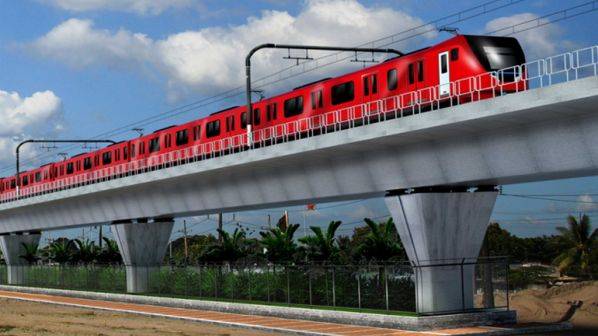Central Luzon’s immense potential for property upside

As the Philippine economy expands, the need for more economic growth corridors outside Metro Manila emerges.
Fortunately, the national government’s massive infrastructure push and decentralization thrust have been resulting in the creation of new economic centers outside the National Capital Region (NCR), and one of these is the thriving Central Luzon region.
Colliers Philippines highlighted its potential during its North/Central Luzon Property Market Briefing held in August at the Hilltop Filinvest Mimosa in Clark. Colliers partnered with Filinvest Land and Filinvest Mimosa in mounting the event attended by nearly 130 participants.
Bullish economic prospects
Central Luzon, comprising the provinces of Pampanga, Bulacan, Tarlac, Zambales, Bataan, Nueva Ecija, and Aurora, is known for its excellent culinary tradition and its vast expanse of farmlands, which earned it the nickname “Rice Granary of the Philippines.” It’s also an economically robust region that has contributed significantly to the national economy.
In 2023, Central Luzon’s economy expanded by 6.1 percent, faster than the Philippine GDP growth of 5.5 percent. Manufacturing and outsourcing are the primary drivers of this growth. With the continued influx of foreign manufacturing companies and multinational outsourcing companies, we see Industry and Services propelling the region’s growth over the near to medium term.
While Metro Manila, Metro Cebu still offers the largest office and vertical residential stock, the provinces and highly urbanized cities of Central Luzon are rapidly catching up.
Colliers is seeing vast opportunities here given the property firms’ aggressive landbanking and development initiatives coupled with exciting government infrastructure projects.

There’s massive upside potential in Central Luzon, and we expect property developers and investors maximizing the low-hanging fruits.
Ascendant Pampanga
Pampanga is ripe for more property development projects.
This is already evident given the entry of national developers launching massive vertical and integrated communities, which will likely further raise the attractiveness of new office, residential, and hotel projects here. The completion of big-ticket infrastructure projects in the next 12 to 48 months, such as the NLEx–SLEx Connector, Central Luzon Link Expressway (CLLEx), and Manila Clark Railway, should also partly lift land values and property prices in the province.
The province is ready for more industrial park developments given the presence of the newly modernized Clark International Airport.
This should be further supported by a cargo rail project in the province and nearby urban areas. Pampanga, along with the rest of Central Luzon, remains an attractive hub for manufacturers and other industrial locators and in our view, the expansion of industrial space here will only result in a more vibrant industrial sector.
Bulacan’s bullish property market
Bulacan had previously been bypassed by office and vertical residential developers expanding outside Metro Manila due to difficulty in consolidating parcels of developable land.
However, its property landscape is likely to change–and drastically at that–once the new Manila International Airport becomes operational. This ambitious project should raise land and property prices in the province and further unlock the potential of its underutilized areas for more property development.
Bulacan’s attractiveness for office, residential, retail, and hotel projects as well as more masterplanned communities is ready to be unleashed. The proposed international airport, scheduled to be completed in 2028, is a 2,500-ha, P736-billion aviation hub with three modern passenger terminals, four runways, and eight taxiways, which will help decongest the aging Ninoy Aquino International Airport.
Another exciting infrastructure project that should strengthen Bulacan’s stature as a major residential hub is Metro Rail Transit Line 7 (MRT-7). This 22-km, P68.2 billion commuter rail line is already 70 percent completed as of May 2024 and aims to cut travel time from Quezon City to Bulacan’s San Jose del Monte City from two to three hours to just 35 minutes.
Megaworld is among the developers that have aggressively landbanked in Bulacan. Its Northwin Global City, for instance, is being positioned as the BGC of the north, supporting the current administration’s decentralization thrust.
Vital Tarlac
Recognized as one the country’s major agricultural centers, Tarlac, like its Central Luzon neighbors, is now emerging as a vital investment and industrial hub.
Its strategic location right at the heartland of Luzon helps this historic province grow into one of the thriving locales in the country today.
Tarlac is right along the path of major expressways and national highways, most notably the Subic–Clark–Tarlac Expressway (SCTEx), the Tarlac–Pangasinan–La Union Expressway (TPLEx), and the Central Luzon Link Expressway (CLLEx). These major roads bring in business traffic, tourists, and potential investors to the province while providing easy access to international airports and seaports.
Tarlac is also seeing its real estate sector gradually accelerating, thanks to a number of masterplanned projects currently underway, including Filinvest New Clark City, a 288-ha community in Capas.
Situated inside the massive 9,450-ha New Clark City development of the Bases Conversion and Development Authority (BCDA), the first phase of Filinvest New Clark City is an industrial project dubbed Filinvest Innovation Park (FIP). Launched in the last quarter of 2023, FIP aims to provide an ideal environment for logistics, e-commerce, and light manufacturing firms that will contribute to Tarlac’s local economy.
Prior to joining Colliers in March 2016, Joey worked as a Research Manager for a research and consutancy firm where he handled business, political, and macroeconomic analysis. He took part in a number of consultancy projects with multilateral agencies and provided research support and policy recommendations to key government officials and top executives of MNCs in the Philippines.


















